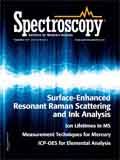Market Profile: Handheld and Portable FT-IR
Major technological advances have allowed the market for handheld and portable Fourier-transform infrared (FT-IR) spectroscopy to develop almost overnight. Demand from a variety of industries and applications is continuing to take shape, and many major vendors in the market have taken note and made sure to grab themselves a major stake in this fast growing area.
Major technological advances have allowed the market for handheld and portable Fourier-transform infrared (FT-IR) spectroscopy to develop almost overnight. Demand from a variety of industries and applications is continuing to take shape, and many major vendors in the market have taken note and made sure to grab themselves a major stake in this fast growing area.

2010 handheld and portable FT-IR demand by industry.
Similarly to the laboratory benchtop IR spectroscopy market, the vast majority of portable and handheld IR spectrometers are based on FT-IR configurations. Technological advances over the past two decades in areas such as lasers, batteries, software, and micro electromechanical systems (MEMS) now allow for vendors to routinely design and build rugged, compact, portable FT-IR instruments that have the same or even better performance than benchtop systems of just a few years ago.
Government applications, such as for defense, HazMat, and other first responders, still account for the largest percentage by far of industrial demand for portable and handheld FT-IR. However, demand from other sectors, including polymers and plastics, have become much more important.
The competitive landscape has changed considerably over the past few years, with large diversified vendors acquiring much smaller companies that have largely paved the way in the market. In 2010, Thermo Fisher Scientific acquired Ahura Scientific, which was a fairly recent start-up that saw incredible growth and success. This year Agilent acquired A2 technologies, which along with Bruker and Smiths Detection, makes for four major competitors in the market. These vendors, combined with a few others, accounted for revenues of around $65 million for portable and handheld FT-IR in 2010, which should grow to more than $100 million by 2015.
The foregoing data were based on SDi's market analysis and perspectives report entitled Global Assessment Report, 11th Edition: The Laboratory Life Science and Analytical Instrument Industry, October 2010. For more information, contact Stuart Press, Vice President – Strategic Analysis, Strategic Directions International, Inc., 6242 Westchester Parkway, Suite 100, Los Angeles, CA 90045, (310) 641-4982, fax: (310) 641-8851, www.strategic-directions.com.

Portable and Wearable Spectrometers in Our Future
December 3rd 2024The following is a summary of selected articles published recently in Spectroscopy on the subject of handheld, portable, and wearable spectrometers representing a variety of analytical techniques and applications. Here we take a closer look at the ever shrinking world of spectroscopy devices and how they are used. As spectrometers progress from bulky lab instruments to compact, portable, and even wearable devices, the future of spectroscopy is transforming dramatically. These advancements enable real-time, on-site analysis across diverse industries, from healthcare to environmental monitoring. This summary article explores cutting-edge developments in miniaturized spectrometers and their expanding range of practical applications.
Q&A: Portable FT-IR Empowers On-Site Food Quality Assurance
February 1st 2024Exploring the transformative capabilities of handheld Fourier transform infrared (FT-IR) spectrometers, Luis Rodriguez-Saona of The Ohio State University emphasizes their pivotal role in ensuring food integrity and safety across the entire supply chain.
Portable Raman Spectrometers: How Small Can They Get?
June 1st 2023There is a growing desire among spectroscopists for having instruments small enough to be taken to the sample, as opposed to bringing the sample to the instrument. The result is that Raman spectrometers are becoming more miniaturized. Because these instruments come at a lower cost and offer distinct advantages over traditional spectrometers, the expectation is that a rapid expansion of when these instruments are applied will come forthwith. We offer a preview of how future miniaturized Raman spectrometers might look.